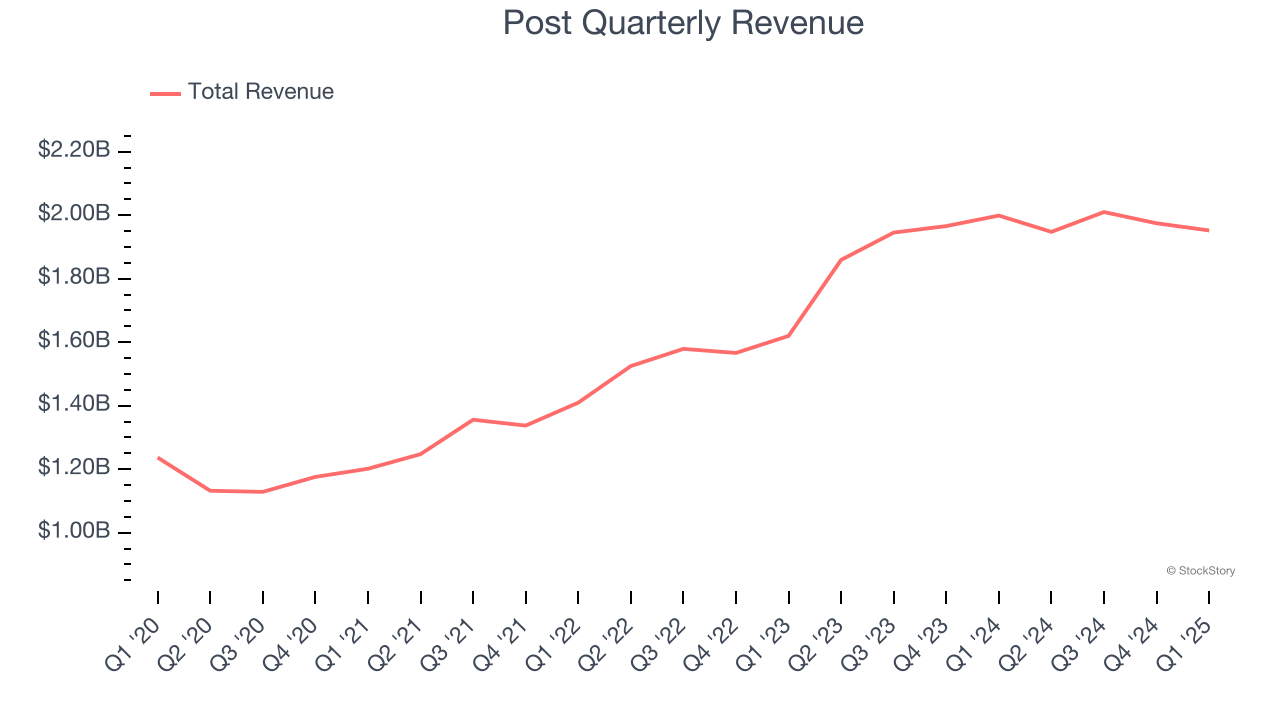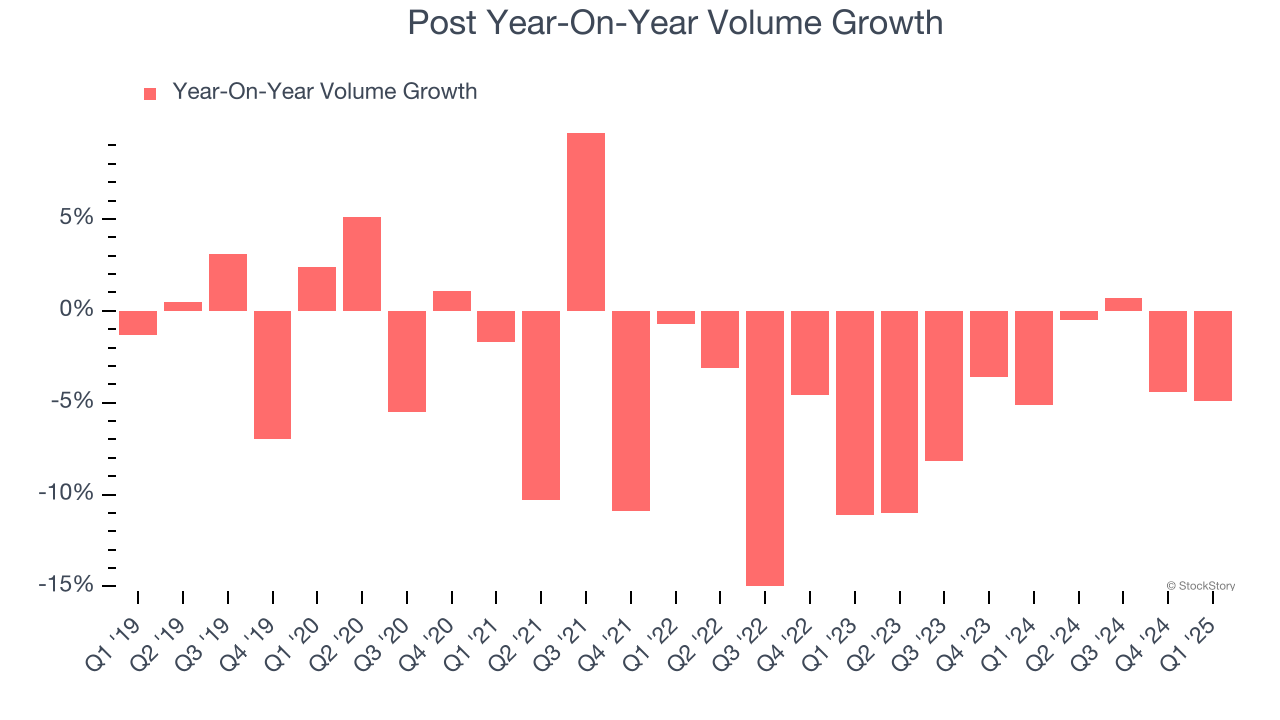
Packaged foods company Post (NYSE:POST) missed Wall Street’s revenue expectations in Q1 CY2025, with sales falling 2.3% year on year to $1.95 billion. Its non-GAAP profit of $1.41 per share was 16.7% above analysts’ consensus estimates.
Is now the time to buy Post? Find out by accessing our full research report, it’s free.
Post (POST) Q1 CY2025 Highlights:
- Revenue: $1.95 billion vs analyst estimates of $1.97 billion (2.3% year-on-year decline, 1% miss)
- Adjusted EPS: $1.41 vs analyst estimates of $1.21 (16.7% beat)
- Adjusted EBITDA: $346.5 million vs analyst estimates of $335 million (17.8% margin, 3.4% beat)
- EBITDA guidance for the full year is $1.45 billion at the midpoint, in line with analyst expectations
- Operating Margin: 9.3%, in line with the same quarter last year
- Free Cash Flow Margin: 3.6%, down from 7.5% in the same quarter last year
- Sales Volumes fell 4.9% year on year, in line with the same quarter last year
- Market Capitalization: $6.28 billion
Company Overview
Founded in 1895, Post (NYSE:POST) is a packaged food company known for its namesake breakfast cereal and healthier-for-you snacks.
Sales Growth
A company’s long-term sales performance can indicate its overall quality. Any business can put up a good quarter or two, but many enduring ones grow for years.
With $7.88 billion in revenue over the past 12 months, Post is one of the larger consumer staples companies and benefits from a well-known brand that influences purchasing decisions.
As you can see below, Post’s sales grew at a solid 13.8% compounded annual growth rate over the last three years despite consumers buying less of its products. We’ll explore what this means in the "Volume Growth" section.

This quarter, Post missed Wall Street’s estimates and reported a rather uninspiring 2.3% year-on-year revenue decline, generating $1.95 billion of revenue.
Looking ahead, sell-side analysts expect revenue to grow 1.2% over the next 12 months, a deceleration versus the last three years. This projection is underwhelming and indicates its products will face some demand challenges.
Today’s young investors won’t have read the timeless lessons in Gorilla Game: Picking Winners In High Technology because it was written more than 20 years ago when Microsoft and Apple were first establishing their supremacy. But if we apply the same principles, then enterprise software stocks leveraging their own generative AI capabilities may well be the Gorillas of the future. So, in that spirit, we are excited to present our Special Free Report on a profitable, fast-growing enterprise software stock that is already riding the automation wave and looking to catch the generative AI next.
Volume Growth
Revenue growth can be broken down into changes in price and volume (the number of units sold). While both are important, volume is the lifeblood of a successful staples business as there’s a ceiling to what consumers will pay for everyday goods; they can always trade down to non-branded products if the branded versions are too expensive.
Post’s average quarterly sales volumes have shrunk by 4.6% over the last two years. This decrease isn’t ideal because the quantity demanded for consumer staples products is typically stable. 
In Post’s Q1 2025, sales volumes dropped 4.9% year on year. This result represents a further deceleration from its historical levels, showing the business is struggling to move its products.
Key Takeaways from Post’s Q1 Results
It was encouraging to see Post beat analysts’ EBITDA expectations this quarter. We were also happy its EPS outperformed Wall Street’s estimates. On the other hand, its revenue slightly missed and its gross margin fell slightly short of Wall Street’s estimates. Overall, this print was mixed but still had some key positives. The stock remained flat at $110.86 immediately following the results.
So do we think Post is an attractive buy at the current price? The latest quarter does matter, but not nearly as much as longer-term fundamentals and valuation, when deciding if the stock is a buy. We cover that in our actionable full research report which you can read here, it’s free.
